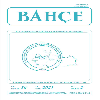BAZI KURT ÜZÜMÜ TÜRLERİNE AİT (Lycium barbarum, Lycium chinense) GENOTİPLERİN MEYVELERİNDE MAKRO MİKRO BESİN ELEMENTLERİNİN BELİRLENMESİ
Kurt üzümleri botanik olarak Solanaceae familyasında yer almakta olup, ticari olarak en yaygın türleri Lycium barbarum ve Lycium chinense’tir. Dünyada kurt üzümü meyvelerinin besin değerleri anlaşıldıktan sonra bu türe olan ilgi hızla artış göstermiştir. Kurt üzümü meyveleri insan sağlığı açısından önemli olan Ca, Mg, P, Fe, Zn, Cu, Se, gibi önemli mineral elementleri içermektedir. İçerdiği bu yararlı vitamin ve mineral elementler, fenolik bileşikler, anti–kanserojen, anti–mutajen özelliklere sahip olup, kurt üzümünün taze ve kurutulmuş meyveleri geleneksel Çin halk hekimliğinde 4.000 yıldır tıbbi bitki olarak kullanılmaktadır. Bu çalışmada amaç, kurutulmuş kurt üzümü genotiplerinin meyvelerinde makro mikro element içeriklerini belirlemektir. Yapılan çalışmada makro elementlerinden N içeriği en yüksek genotip %2.40 ile HZR1, P içeriği en yüksek %0.35 ile M1 ALTUNİ, Ca içeriği en yüksek olan %0.41 ile HZR3, Mg içeriği %0.76 ile M1 ALTUNİ ve HZR1 genotipi olmuştur. Mikro elementlerinden ise en yüksek Fe içerikleri 119.27 mg kgKA⁻¹ ile M1 ALTUNİ, 117.89 mg kgKA⁻¹ ile HZR1, 113.89 mg kgKA⁻¹ile HZR2 genotiplerinde tespit edilmiştir. Zn içerikleri bakımından 37.02 mg kgKA⁻¹ ile HZR1, Cu içerikleri açısından 14.70 mg kgKA⁻¹ ile M1 ALTUNİ genotipleri ön plana çıkmıştır.
DETERMINING THE MACRO MICRO NUTRIENT ELEMENTS IN THE FRUITS OF SOME WOLFBERRY (Lycium barbarum, Lycium chinense) CULTIVAR GENOTYPES
Wolfberries are botanically from the Solanaceae family and the most commercially common types are Lycium barbarum and Lycium chinense. Once the nutritional value of wolfberry fruits has been recognized, the interest towards this cultivar has risen rapidly. Wolfberry fruits contain important mineral elements such as Ca, Mg, P, Fe, Zn, Cu and Se, which are all highly valuable for human health. These beneficial vitamins, mineral elements and phenolic compounds contained in the fruit have anti– cancerogenic, anti–mutagen properties. The fresh and dried fruits of wolfberry have been used as a medical herb for the past 4.000 years in Chinese community medicine. The purpose of this study is to determine the macro micro element contents of dried wolfberry genotypes. The study has yielded that the genotype with the highest N content, of the macro elements, is HZR by 12.40%, the one with highest P content is M1 ALTUNİ by 0.35%, the one with highest Ca content is HZR3 by 0.41% and the ones with highest Mg content are M1 ALTUNİ and HZR1 genotypes by 0.76%. In terms of micro elements, the highest Fe contents have been observed in M1 ALTUNİ genotype by 119.27 mg kg d.w.⁻¹, HZR1 by 117.89 mg kg d.w.⁻¹ and HZR2 by 113.89 mg kg d.w.⁻¹. With regards to Zn contents, HZR1 was the leading one by 37.02 mg kg d.w.⁻¹ while M1 ALTUNİ genotype had the greatest Cu content by 14.70 mg kg d.w.⁻¹.
___
- 1. Amagase, H., Nance, D.M., 2008. A Randomized, Double-Blind, Placebo Controlled, Clinical Study of the General Effects of a Standardized Lycium barbarum (Goji) Juice, GoChiTM. The Journal of Alternative and Complementary Medicine, 14(4):403-412.
- 2. Anonymus, 2019a. http://ccdb.tau.ac.il/ angiosperms/solanaceae/lycium (Erişim Tarihi: 23.02.2019).
- 3. Gogoasa, I., Alda, L., Rada, M., Negrea, P., Negrea, A., Bordean, D.M., Gergen, I. 2014. Goji berries (Lycium barbarum) as a source of trace elements in human nutrition. Journal of Agro Alimentary Processes and Technologies 20(4):369- 372.
- 4. Anonymous, 2019b. http://mywellness warehouse.com/supplement/neurotransmitt er-system/goji-berry (Erişim Tarihi: 23.02.2019).
- 5. Anonymous, 2019c. www.agoji.com/gojiberries/ goji-berriesnutritional-informationhealth- benefits (Erişim Tarihi: 23.2.2019).
- 6. Zhang, K.Y.B., Leung, H.W., Yeung, H.W., Wong, R.N.S., 2001. Differentiation of Lycium barbarum from its related Lycium species using random amplified polymorphic DNA. Planta Med. 67:379- 381.
- 7. Felzenszwalb, I., da Costa Marques, M.R., Mazzei, J.L., Aiub, C.A.F., 2013. Toxicological evaluation of Euterpe edulis: a potential super fruit to be considered. Food Chem. Toxicol. 58:536.
- 8. Vicentini, A., Liberatore, L., Mastrocola, D., 2016. Functional foods: trends and development of the global market. Italian Journal of Food Science 28:338.
- 9. Niro, S., Fratianni, A., Panfili, G., Falasca, L., Cinquanta, L., Alam, M.R., 2017. Nutritional evaluation of fresh and dried goji berries cultivated in Italy. Italian Journal of Food Science 29(3).
- 10. Bellaio, G., Carnevale, E., Bona, S., 2016. Preliminary studies on sensory, instrumental and chemical evaluation of dried goji (Lycium barbarum L.) berries. Acta Horticulturae (1120):515-522.
- 11. Llorent-Martínez, E.J., Fernández-de Córdova, M.L., Ortega-Barrales, P., Ruiz- Medina, A., 2013. Characterization and comparison of the chemical composition of exotic superfoods. Microchem. J. 110:444.
- 12. Endes, Z., Uslu, N., Özcan, M.M., Er, F., 2015. Physico chemical properties, fatty acid composition and mineral contents of goji berry (Lycium barbarum L.) fruit. J. Agroaliment Processes Technol. 21(1):36.
- 13. Clausen, M.J.V., Poulsen, H., 2013. Sodium/potassium homeostasis in the Cell. Ch. 3. In: Metallomics and the Cell (Metal Ions in Life Sciences 12), L. Banci (Ed.), p.41. Springer, Dordrecht.
- 14. Chaturvedi, V.C., Shrivastava, R., Upreti, R.K., 2004. Viral infections and trace elements: A complex interaction. Curr. Sci. 87:1536.
- 15. Jones Junior, J.B., 1972. Plant tissue analysis for micronutrients. In: Mortvedt, J.J., Giordano, P.M., Lıindsay, W.L. (Ed.). Micronutrients in agriculture, Madison: Soil Science Society of America 319 346.
- 16. Jones Junior, J.B., Wolf, B., Mills, H.A., 1991. Plant analysis handbook. Athens: Micro Macro 213p.
- ISSN: 1300-8943
- Yayın Aralığı: Yılda 2 Sayı
- Başlangıç: 1968
- Yayıncı: Atatürk Bahçe Kültürleri Merkez Araştırma Enstitüsü
Sayıdaki Diğer Makaleler
ORDU KENTİ ALTINORDU İLÇESİ PARKLARINDA ÜZÜMSÜ BİTKİLERİN KULLANIMI
Besim KARABULUT, Hüseyin ÇELİK
Onur DURA, Yusuf SARI, Ahmet Bircan TINMAZ, İbrahim SÖNMEZ, Ayşe YEŞİLAYER, İlker KEPENEKÇİ
Guava (Psidium guajava L.) Tohumlarının Çimlenmesi Üzerine Araştırmalar
Nafiye ADAK, Recep BALKIÇ, İlhami TOZLU, Lokman ALTINKAYA, Ahmet SOYDAL, Hamide GÜBBÜK
ÖRTÜALTI ÇİLEK YETİŞTİRİCİLİĞİ VE TÜRKİYE’DEKİ DURUMU
Leyla DEMİRSOY, Ayşenur KANDEMİR, Derviş Emre DOĞAN
Yusuf SARI, Ahmet Bircan TINMAZ, İbrahim SÖNMEZ, Onur DURA, İlker KEPENEKCİ, Ayşe YEŞİLAYER
BULANCAK’TA YETİŞTİRİLEN BAZI MAVİYEMİŞ ÇEŞİTLERİNİN POMOLOJİK ÖZELLİKLERİ
